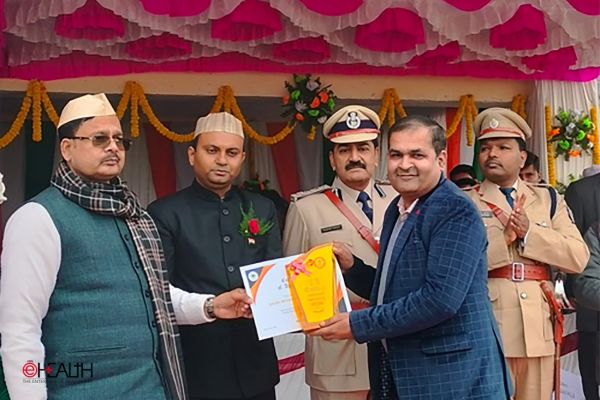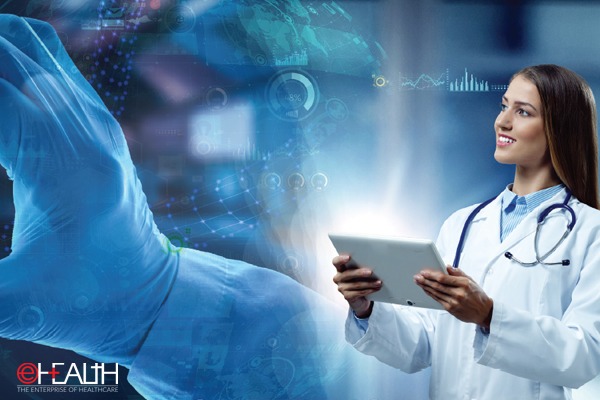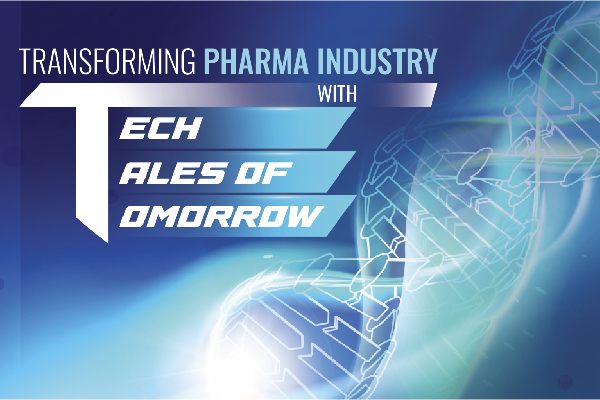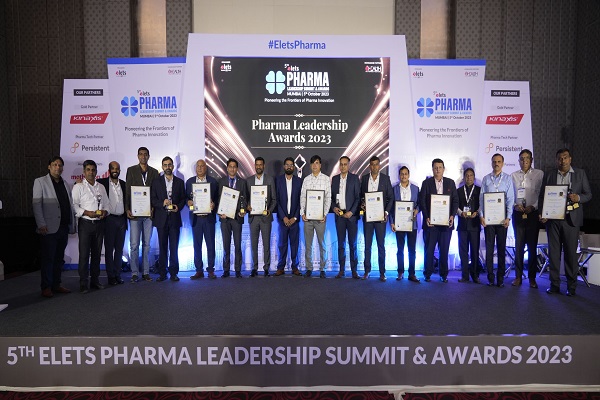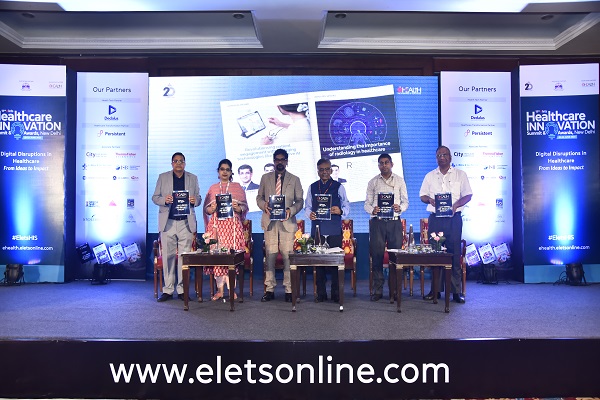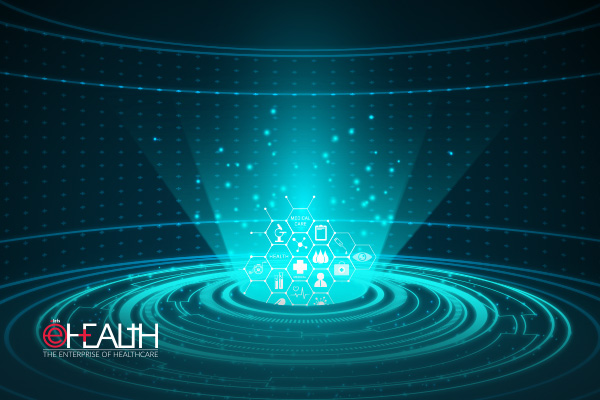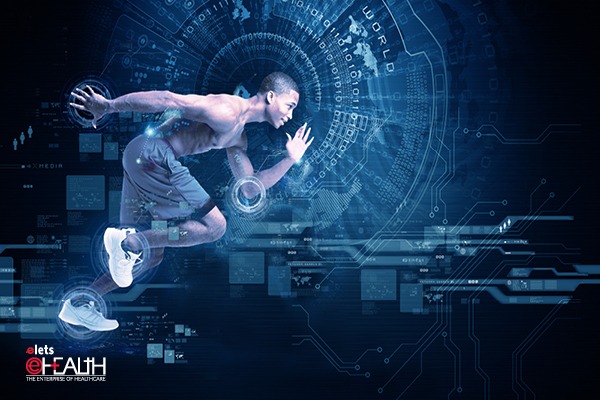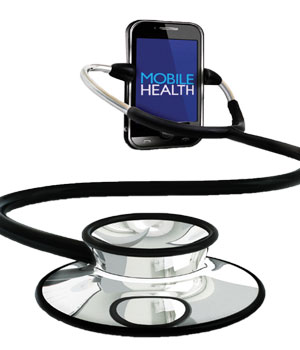
 New scientific methods for treatment of diseases plaguing the mankind since ages are increasingly being used by doctors across the globe which is, in turn, reshaping the face of medical equipment industry. Neha Thakur of ENN delves deep into the changes brought in by technology in medicine
New scientific methods for treatment of diseases plaguing the mankind since ages are increasingly being used by doctors across the globe which is, in turn, reshaping the face of medical equipment industry. Neha Thakur of ENN delves deep into the changes brought in by technology in medicine
Of late, the huge growth opportunities and the advent of science within the domestic and global healthcare sectors have attracted enough attention and also income in the health industry. Indeed, the Indian Healthcare system has notched up several significant achievements over the last 10 years particularly in terms of life expectancy, controlling infant mortality rate and attaining ample success in coping with various fatal diseases and epidemics haunting people since ages. However, easy accessibility of quality healthcare and affordability to the citizens still remain the focus of Indian health ministry.
The sudden boom of health sector is expected to aid foreign companies to understand the Indian capabilities for investing in the health sector. Indeed, technology in the last two decades has revolutionized the way Indian healthcare is not only perceived but also delivered worldwide. It has greatly aided patients and providers alike by enhancing the quality of delivery, services, reduction in turnaround time of workflows and thus the overall cost, besides bringing in higher accountability into the system. Constant advancements in the field of medical technology are playing a great role in safeguarding and improving the quality of our lives.
The influence of medical technology is all pervasive and its positive impact is not limited to the higher privileged sections of the society but has also helped the poorer lot in reducing IMR (Infant Mortality Rate), MMR (Measles, Mumps and Rubella vaccine), following usage of right technology like incubators, warmers, better operation and surgery equipment. The wealth of clinical material to be learned in India is actually vast beyond words; the exposure that a young doctor acquires here is quite phenomenal. Because of the diversity of our population, there always remains a broad spectrum of diseases, including infectious diseases like malaria, dengue, filariasis, tuberculosis, and leprosy.

As medical treatment costs in the developed nations are unimaginably high, today more and more foreigners are finding the prospect of international travel for medical care increasingly appealing. Around 150,000 people across the globe travel to India each year seeking low-priced healthcare procedures. Medical tourism is a growing sector in India too and the medical tourism sector is expected to gain an annual growth rate of 30%, making it a big industry by next year.
We also have an expanding urban population; hence, we also see chronic health problems that plague the western countries since long like cardiovascular diseases. Because consanguinity is common in some Indian communities, we very often get to witness several rare pediatric syndromes, some of which have never been reported in western countries like the unusual variations of Escobar syndrome.
With rapid advancements and developments taking place in almost every field you can imagine, it is impossible that health and medicine sector would remain unaffected by it for long. Diseases that were not open to sufferings and were lagging behind since ages have now found new ways through technological and scientific advancements.
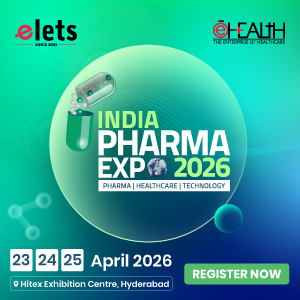
Holistic approach towards a patient treatment must be focused today. Repetitive Transcranial magnetic stimulation therapy has been partly useful in treating chronic depression. Procedures for major mental diseases like OCD (obsessive compulsive disorders) are treated with usage of Gamma Knives wherein a certain area of brain, which is the root cause of disease, is marked first and later is burnt through radiation process. – Dr J N Chaudhary, CEO/founder VIMHANS

Against the backdrop of health care reform and a controversial medical device tax, medical technology companies are now focusing more on products that deliver cheaper, safer, faster, and much more efficient patient care without any loss of time, money and efforts.
Lets take a look at some of the biggest and prominent innovations in healthcare technologies which are in vogue both in India and across the world.
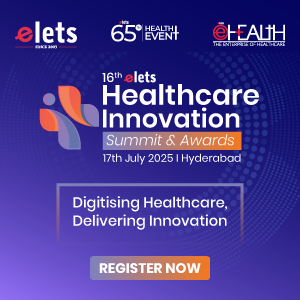
Microchips Modeling Clinical Trials.
The potential to streamline, enhance boost and perhaps transform the current healthcare system is gigantic beyond words. Thats how microchip modeling clinical trials came gradually into usage because there was an open opportunity and a need to innovate on the way clinical trials have been done. Microchip modeling clinical trials target to replace the usage of animals in clinical trials to more accurately test the safety and efficacy of treatment for human beings and gradually stop taking the lives of helpless animals generally used in experimenting.
These microchips are typically smaller than a human thumb, can reconstruct the complicated interface between organs and capillaries, which is similar to the idea of micro fabrication, the process of making structures on a micrometer scale.
By eliminating animal prototypes in certain circumstances, scientists and doctors have been able to reconstruct organs like the human lungs by focusing on the usage of complicated systems of microchips to emulate these bodily systems. In most cases, animals pass as adequate human stand, but in some cases, they do not come at accurate results on how human beings would be affected by the same procedures, diseases and treatments. Today, microchips more closely resemble live tissue, cell types and realistic three-dimensional interactions present in the human body than do other forms of clinical testing presently.
Wearable Technology like Google Glass
Wearable technology is still in its infancy, but has already started to have widespread influence across many hospitals and other industries. The very first surgeon to use Google Glass in the surgery or wearable technology in general while performing a surgery was Dr. Rafael Grossmann. As wearable technology continues to improve to better meet the needs of doctors and surgeons, healthcare providers continue to hope that its usage will affect both the health of patients and surgeons to better receive and monitor the patient care system.
The pioneer of Google Glass; Dr. Grossmann claims that Google Glass and other similar wearable technology will improve the manner in which healthcare service providers communicate with patients and their family members thereby improving the customer satisfaction of patients. In addition, making doctors quite effective in their jobs due to the better channels of communication with patients.
He sees this new technology as great permission for a doctor to someday interact with a patient, while simultaneously pulling up their medical history using Google Glass. The surgery performed using Google Glass could serve as an example of real-time education for medical students and other professionals alike. There are even telemedicine opportunities with Google Glass as well, allowing doctors and other medical experts to provide clinical care in certain capacities from a different location.
The practice is already in use by doctors providing medical advice via the phone or e-mail in many instances across the United States but, its the technology that limits how effective this approach can be when it comes to what level of care is needed to be administered.
This is so important because according to most doctors many dont survive a medical condition or emergency each year because the right patient needs to be at the right place at the right time and this isnt often the case as most live in the rural areas. Scientists and doctors across the globe argue that with the continued adoption of wearable technologies like Google Glass, more lives will be saved now in communication since communication between medical professionals and patients will remain on the platform of improvement and take it to higher levels.
3D Printed Biological Materials
There have been increasing widespread utility of 3D printers these days, and interestingly the medical uses are also extremely practical and overtime could indeed resolve ongoing health issues once its discovered how to precisely apply them to numerous people.
Embryonic Stem Cells:
These cells have now been efficiently printed in a lab and could be one-day use to create tissue that could help test drugs and help in the development and further growth of any new organ.
Printing Skin:
Of late, there have been many advances in the areas of developing skin to help burn victims and skin disease patients, 3D printers can help further jumpstart these advances with the addition of laser-printed skin cells.
Blood Vessels & Heart Tissue:
Organovo is a company that has already successfully printed blood vessels and sheets of cardiac tissue that actually beat along just like a real heart.
Replacing Cartilage & Bone:
3D printers have also helped scientists and doctors create stem cells that have the potential to eventually develop into both bone and cartilage of the body.
Studying Cancer:
Printing cancer cells is indeed an innovative way of growing these cells on tissue in a lab for further experimentation process, test drugs on and to eventually find a solution for deadly diseases that have haunted since ages.
Patching a Broken Heart:
Printing cells with a 3D printer proves useful in a recent study of rats that had previously suffered heart attacks and were given these patches of cells to help slowly help improve their heart function overtime.
Replacement Organs:
Printing new part for organs or entire organs all together will help solve an ongoing medical need and help saves hundreds of thousands of people every year waiting for an organ donation to help them.
This latest medical technology has kick started the technique in neuroscience called as optogenetics, where neuroscientists aim a single neuron in the brain of a mouse merely by turning on a light. This is done by using a light activated gene and inserting it into the genome of a mouse to make it identifiable, when the particular neuron is firing in the brain.
Optogenetics is a hot topic amongst the medical community today, but its surrounded by both advantages and disadvantages as well. Its main purpose is to control a brains activity through a light. This could have far reaching benefits with humans to help better understand the complex network of neurons that form the composition of a human brain. A stronger comprehension could help humans grasp human behavior, generation of ideas, thoughts and also process of actions and reactions.
Identifying these neurons may sometime help people monitor the errors or deformities in the various neurons in the brain that may cause devastating mental disorders like Schizophrenia, Parkinsons, panic attacks, mood disorders, dementia and severe depression. By controlling the tasks of specific neurons, neuroscientists began to learn how various neutrons contribute to the entire functioning of the human brain.
The firing of a neuron through proper lighting may someday be a technique to get answers to some of the several open questions human civilization has always pondered on in terms of both medically and physiologically since the dawn of time or this technique may not be able to work with humans because of its invasive nature in its current applications with tiny animals like rats. As of now, only future holds the answer to whether this approach will prove effective and fruitful. But despite all, the study of human brain using light will help neuroscientists towards a better understanding of the neurons and how they function across the complicated body organ.
Hybrid Operating Rooms
With the addition of new technology, comes the integration with established technology and systems that either needs to be replaced totally or be connected with for better improvement of performance or build upon the latest and fresh technologies and their usage. No doubt, this is a herculean task for healthcare professionals due to the complexities present in the systems, technologies and operations currently in place at all healthcare facilities, hence explains why this industry is often the slowest in pace when revolutionary changes become the need of the hour.
A hybrid operation room is a latest innovation where a traditional operation room is transformed with highly advanced forms of medical technology to improve the care delivered to patients and enhance the skill-sets of medical practitioners when it comes to monitoring the care of patients.
Today, the technologies used in hybrid operating rooms have generally helped reduce trauma, shock, scarring, spurred faster rehabilitation and has aided in reduction of hospital stays and any further admission of patients. The technologies used at the various foreign hospitals that helped improve a patients experience at a hospital included advanced imaging technologies that allowed for real-time intra-operative image guidance, as well as tools to help perform high-risk minimally invasive cardiac procedures.
“The pioneer of Google Glass is Dr Grossmann who claims that Google Glass and other similar wearable technology will improve the manner in which healthcare service providers communicate with patients and their family members thereby improving the customer satisfaction of patients .Google glass have made doctors quite effective in their jobs due to the enhanced channels of communication with patients now. Doctor sees this new technology as permission for interaction with patients, while simultaneously pulling up their medical history using Google Glass.”
Digestible Sensors
Approved three years ago, digestible sensors will continue to provide healthcare professionals with more information about the human body and how various treatment solutions affect each system of organs.
A digestible sensor is actually a sensor that transmits information about a patient to medical experts to help them customize various medical care to the individual as well as the care provided to other individuals who might or might not have similar disease or ailments.
This technology would eventually allow an individual to swallow a pill provided by their respective doctors and skip their presence due to these digestible sensors that look like a normal pill and have the capacity to perform all the same functions a doctor typically handles in a personal interaction with a doctor in standard treatments.
Digestible sensors are capable of monitoring your bodily systems and wirelessly transmit whats happening in the body to a different device like your Smartphone, iPad or personal computer for your own review or perhaps examination by the doctor later on. Latest innovations with digestible sensors dont even require a battery source since they depend totally on the human body for their energy purposes.
An innovation of this nature could have far reaching effects for healthcare by helping in checking diseases and conditions in initial stages in people for digesting these sensors that are in reality examined through a wireless connection.
In healthcare innovations theres an infographic on these developments and others that drastically impact the future of healthcare for patients and professionals alike in terms of future of Indian medical equipment, science and technology.
Cloud-based provider relationship management
Needless to say, communication has been one of the biggest hassles faced by healthcare industry today. From numerous referrals, progress updates, and insurance authorizations; these numerous communications channels result in big wastage of money, efforts, time and last but not the least, a liability to every healthcare provider.
Primary care providers and specialists require fresh and latest information in real-time, which sometimes a phone call or a fax machine might not be able to fulfill this need.
Patients are stuck halfway through as doctors still communicate with antiquated systems delaying the much needed critical care. Studies state that as many as 70 percent of referrals are not received by the specialty care provider. With these numbers soaring so high each day, patients are not receiving treatment, healthcare providers are losing money, and eventually the cost of healthcare to tax payers remain ever increasing.
He sees this new technology as allowing a doctor to someday interact with their respective patients, while simultaneously pulling up their medical history through Google Glass. The surgery performed using Google Glass could serve as an example of real- time education for doctors, medical students, scientists and researchers.
There are even telemedicine opportunities with Google Glass as well, allowing doctors and other medical professionals to provide clinical care in certain capacities from a distant location. The practice is starting to be used by doctors providing medical advice on phone, iPad, skype or email in many instances across the globe, but its the technology that limits how effective this approach can be when the question of attaining the zenith in patient care process and related administration arises.
There is no denying that this is quite critical because according to scientists, many dont survive a medical condition or emergency each year because the right patient is unable to reach at the right place that too at the right time simply because most people dont live near a good hospital and are based in rather rural areas with negligible medical facilities.
Grossmann has used Apples FaceTime to discuss crucial patient crises as well as virtual examinations with patients in various locations across the country, able to severely impact the outcome of their care. He argues that with the continued adoption of wearable technologies like Google Glass, more lives will be saved since communication between medical professionals and patients will continue to improve to the next level.
“With the most deadly form of skin cancer, melanoma, a huge number of dangerous-looking moles have no impact and are normal in nature, but has always been impossible to understand completely without an invasive surgical biopsy done”
Cutting Back on Melanoma Biopsies
With the most deadly form of skin cancer, melanoma, a huge number of dangerous-looking moles have no impact and are normal in nature, but has always been impossible to understand completely without an invasive surgical biopsy done. Today, dermatologists have new help in deciding upon this form of skin cancer, a tool approved by the FDA (food and drug administration) for multispectral analysis of tissue morphology.
The MelaFind optical scanner is not for definitive diagnosis, but rather to provide additional information a doctor can use in determining whether or not to order a biopsy. The goal is to minimize the number of patients suffering from unnecessary biopsy marks, with not to forget the extra effort and money and unnecessary medical procedures involved in removing those scars.
In America, the MelaFind technology (MELA Sciences, Irvington, NY) uses missile navigation technologies originally paid for the Department of Defense to optically scan the surface of a suspicious lesion at 10 electromagnetic wavelengths. The collected signals are then processed using heavy-duty algorithms and matched against a registry of 10,000 digital images of melanoma and skin diseases.
Electronic Aspirin
For people who suffer from migraines, cluster headaches, and other causes of chronic, excruciating head or facial pain regularly, the numerous pills like aspirin and disprin methods are actually futile. Researchers and doctors have since long associated the most severe, chronic forms of headache with the sphenopalatine ganglion (SPG), a facial nerve bundle, but havent yet discovered a treatment that works on the SPG long-term.
technology under clinical investigation at Autonomic Technologies, Inc., California is a patient-powered tool for blocking SPG signals at the very first signs of a chronic headache. The system includes the permanent implant of a small nerve stimulating device in the upper gum on the side of the head normally affected by headache.
The lead tip of the implant connects with the SPG bundle, and when a patient senses the onset of a headache, he or she places a handheld remote controller on the cheek closest to the implant. The resulting signals stimulate the SPG nerves and block the pain-causing neurotransmitters.
Needle-Free Diabetes Care
Diabetes self-care is a pain since ages. It brings the constant need to draw blood for glucose testing, the need for daily insulin shots and of course the heightened risk of infection from all that poking and injections. Continuous glucose monitors and insulin pumps are todays best options for automating most of the complicated daily process of blood sugar management, but they dont completely remove the need for skin pricks and shots. But theres new skin in this game. Echo Therapeutics in America is developing technologies that would replace the poke with a small patch.
The company is working on a transdermal biosensor that reads blood analytes through the skin without drawing blood. The technology involves a handheld electric-toothbrush-like device that removes just enough top-layer skin cells to put the patients blood chemistry within signal range of a patch-borne biosensor. The sensor collects one reading per minute and sends the data wirelessly to a remote monitor, triggering audible alarms when levels go out of the patients optimal range and tracking glucose levels over time.
Robotic Check-ups
A pillar of health reform is improving access to the best health care for more people. Technology is a cost-effective and increasingly potent means to connect clinics in the vast and medically underserved rural regions of India with big city medical centers and their specialists.
Telemedicine is well established as a tool for triage and assessment in emergencies, but new medical robots go one step further”they can now patrol hospital hallways on more routine rounds, checking on patients in different rooms and managing their individual charts and vital signs without direct human intervention.
The RP-VITA Remote Presence Robot produced jointly by iRobot Corp. and InTouch Health is the first such autonomous navigation remotepresence robot to receive FDA clearance for hospital use. The device is a mobile cart with a two-way video screen and medical monitoring equipment, programmed to monitor and work in the busy halls of a hospital.
A Valve Job with Heart
The Sapien transcatheter aortic valve is a life-saving alternative to open-heart surgery for patients who need new a new valve but cant endure the rigors of the operation. Manufactured by Edwards Life Sciences (Irvine, CA), the Sapien has been available in Europe for some time but is only now finding its first use in U.S. heart centers, where it is limited only to the frailest patients.
The Sapien valve is guided through the femoral artery by catheter from a small incision near the grown or rib cage. The valve material is made of bovine tissue attached to a stainless-steel stent, which is further expanded by inflating a small balloon when correctly placed in the valve space. A simpler procedure that promises dramatically shorter hospitalizations is bound to have a positive effect on the cost of care.
Apart from these mentioned medical equipment, there are many more making way and huge success sin Indian health care industry too. Lets understand what these top ten latest medical technologies in the present year are.
Targeted therapy for cancer
Well, theres new hope for people with chronic lymphocytic leukemia (CLL), a cancer responsible for several deaths per year. After promising clinical trial results, the first-in-class oral drug ibrutinib is expected to be approved by the U.S. Food and Drug Administration for treatment of CLL. The drug targets malignant cells present in the body, while successfully sparing a patients immune system.
Heart risk through the gut
Last year, researchers and medical experts added a new biomarker to the hunt for heart disease: TMAO. Your body produces TMAO (trimethylamine N-oxide) when your gut bacteria digest choline, which is found mostly in egg yolks, red meat and all milk and dairy products. Choline is thought to promote hardening of the arteries in heart. Besides, TMAO provides an accurate screening tool for predicting future risks and hazards of heart attack, stroke and death.
Personal sedation station
Novel, personalized sedation station technology allows healthcare professionals other than anesthesiologists to deliver the light sedation required for life-saving colonoscopies. The technology could help bring the nationwide cost of this crucial test down by a good amount every year.
Hope for acute heart failure
As per WHO, heart failures account for approximately 55,000 deaths every year. There had not been a major treatment breakthrough in two decades, until the arrival of serelaxin. This synthetic version of a human hormone gained breakthrough status from the FDA last year. Serelaxin study results reported a 38 percent reduction in death rates after six months in patients with acute heart failure, compared with those who received standard therapy.
Fecal transplant restores balance
In fecal microbiota transplantation, doctors transfer a liquid suspension made from a healthy persons fecal matter into a sick persons colon. Basically, the goal is to restore bacterial balance and fight infections and diseases. This approach could become a primary therapy not only for treating deadly and fatal infection, but also for inflammatory bowel disease.
Decision support for smarter surgery
A new anesthesia management system helps surgeons, anesthesiologists, nurses and others make smarter decisions in the operating room. The system not only records everything that happens before, during and after surgery, it also has an alert system, influenced by technology used in jets; that highlights potential problems in real time.
Breakthrough for hepatitis C
Until 2011, there were no proven medicines for patients who didnt respond to traditional therapy in the outbreak of hepatitis C. But two drugs, telaprevir and boceprevir, made the top ten innovations list two years ago. Now, another ” sofosbuvir, the first all-oral therapy ” further expands the list of treatment options. The drug promises the highest cure rates ever, reduced treatment time and fewer side effects.
Device disrupts seizures
The seizures that come with epilepsy disrupt life ” but a new neurological device can disrupt seizures. For patients with intractable epilepsy, in which treatment fails to control seizures, the experimental technology is especially promising. The surgically implanted device can detect triggers of an impending seizure and deliver short electrical pulses to interrupt them before any possible symptoms occur.
Genomic tests for managing cancer
Genomic-based tests have brought a new age of cancer diagnosis and precision medicine. These tests analyze the genes in an individuals tumor and body to predict and analyze as to how it would respond. Past tests have improved management of breast and colorectal cancers, and last year, the FDA approved a similar test for prostate cancer too. The goal of these tests is to avoid any hard and aggressive treatment when it is not actually needed, and hence save lives and offer ease to the suffering patients.
The bionic eye has become a reality now, in the past, there was no effective treatment for late-stage retinitis pigmentosa (RP), a disease that causes most patients to be legally blind by the time they attain 40 years of age. A new technology featuring a retinal prosthesis; commonly called the bionic eye has transformed everything. This technology does not restore complete vision. But it does allow people to detect light and dark in the environment and identify the location or movement of people and objects.
Despite major advancements in medicine and its technology, surgical procedures are still associated with complications such as infections and sepsis. Lack of antiseptic measures and unsafe instrument sterilization practices often lead to surgically-induced infections.
Be a part of Elets Collaborative Initiatives. Join Us for Upcoming Events and explore business opportunities. Like us on Facebook , connect with us on LinkedIn and follow us on Twitter , Instagram.
"Exciting news! Elets technomedia is now on WhatsApp Channels Subscribe today by clicking the link and stay updated with the latest insights!" Click here!







